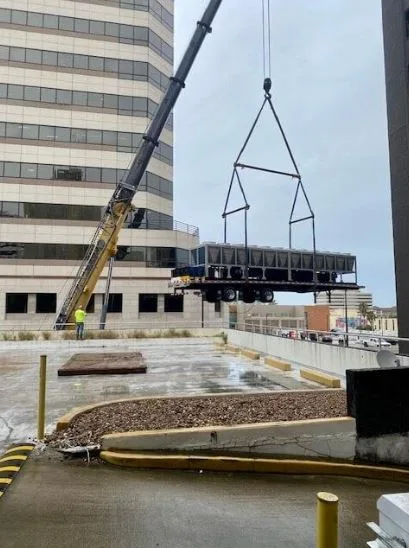Canada’s Commitment to Refugee Resettlement: The Hidden Bureaucratic Hurdles
Canada’s reputation as a global leader in refugee resettlement is well earned. Year after year, the country welcomes tens of thousands of refugees, offering them safety, opportunity, and a chance to rebuild their lives. The government’s humanitarian commitment is matched by an extensive network of community sponsors, provincial partners, and service agencies that help newcomers integrate successfully.
But behind the promise of a fresh start lies a complex reality: the administrative and linguistic hurdles that every refugee must overcome before stepping onto Canadian soil. From verifying identity to translating crucial documents, the process is filled with technical steps that can delay or even derail resettlement if not handled correctly.
A Humanitarian Commitment with Complex Logistics
Canada resettles more refugees per capita than almost any other nation in the world. Programs such as the Government-Assisted Refugee (GAR) stream, the Private Sponsorship of Refugees (PSR) program, and the innovative Economic Mobility Pathways Pilot (EMPP) provide multiple entry points for displaced individuals and families.
However, every one of these pathways relies on clear, verified, and legally valid documentation. Applicants must prove who they are, where they came from, and that they meet the eligibility requirements for resettlement or employment-based immigration. In many cases, those proofs are scattered, incomplete, or written in a language not accepted by Canadian officials.
For people fleeing conflict or persecution, this is often the hardest part of the journey — gathering and authenticating the paper trail of a life that may have been disrupted or destroyed.
The Challenge of Proving Identity
Identity verification is the cornerstone of any resettlement application. Refugees must present documents such as passports, national IDs, birth certificates, or UNHCR registration cards. Yet for many, those documents are missing, damaged, or issued by institutions that no longer exist.
Even when available, these records are often in languages other than English or French. Immigration officers, sponsors, and settlement agencies cannot process them unless they are translated accurately and certified by a qualified professional.
A mistranslation — even a small one — can cause confusion about names, dates of birth, or family relationships, leading to delays or requests for additional proof. That’s why certified translation of identity papers is not just a formality; it’s a vital step in ensuring that a refugee’s story is understood and accepted by Canadian authorities.
At DocsBase Canada, we frequently handle translations of identity documents from languages such as Arabic, Dari, Pashto, Tigrinya, and Ukrainian, providing applicants with certified, legally recognized versions that can be submitted directly to Immigration, Refugees and Citizenship Canada (IRCC).
Educational and Professional Proofs — A Barrier to Opportunity
Once refugees arrive in Canada, their integration depends heavily on access to education and employment. But to work or study, they must often provide proof of their qualifications — diplomas, transcripts, professional certificates, or employment records.
Unfortunately, these are among the most challenging documents to obtain and verify. Universities and employers in conflict-affected regions may no longer exist, and applicants may have only partial records or photocopies.
Even when documents are available, Canadian institutions will not accept them unless they are properly translated into English or French. A single incorrect term in a degree title or occupational description can lead to confusion during credential evaluation.
Language Barriers and Bureaucratic Complexity
For many refugees, Canada’s official languages — English and French — are entirely new. Navigating complex government forms, instructions, and correspondence without full fluency can be overwhelming. Simple misunderstandings can lead to incomplete applications or missed deadlines.
Settlement organizations play a vital role in bridging these gaps, but language barriers still slow down communication with immigration authorities. The situation becomes even more complicated when multiple agencies — federal, provincial, and international — must coordinate a single file.
Certified translation offers a critical solution here too. Translating correspondence, legal notices, and procedural instructions allows applicants and sponsors to understand each step and respond promptly. This not only prevents costly delays but also gives refugees confidence and autonomy in the process.
Why Certified Translation Matters
In Canada’s immigration and resettlement systems, the standard for document translation is high. Every translated document submitted to IRCC or a provincial authority must be accompanied by a certification statement confirming its accuracy and completeness. Translations must mirror the original in structure and content, including official stamps, handwritten notes, and seals.
At DocsBase Canada, all translations are prepared by professional linguists experienced in immigration and legal documentation. Each translation comes with a signed certification of accuracy, ensuring that it is fully compliant with Canadian immigration requirements.
This guarantees that documents such as birth certificates, marriage papers, school records, and police clearances will be accepted without question — saving applicants weeks or months of waiting.
The Hidden Bureaucracy Behind Compassion
While Canada’s humanitarian vision is admirable, the administrative machinery behind refugee resettlement is immense. The system must balance compassion with verification — ensuring that every applicant is who they claim to be, while processing thousands of cases fairly and securely.
That balance depends on documentation. Every certificate, every signature, every translation plays a role in turning a hopeful application into a successful relocation. For refugees, these are not just papers — they are proof of existence, identity, and belonging.
Certified translation may seem like a small piece of the puzzle, but it’s the one that connects every other part. Without it, even the most qualified and deserving applicants can face unnecessary obstacles.
Conclusion
Canada’s commitment to refugee resettlement continues to inspire the world, proving that compassion and policy can coexist. Yet the process itself remains full of hidden bureaucratic hurdles — especially for those who must reconstruct their lives on paper before they can rebuild them in person.
By addressing documentation and language challenges with professionalism and empathy, we can make Canada’s resettlement system not only welcoming but also accessible and efficient.
At DocsBase Canada, we are proud to support this mission by ensuring that every refugee’s documents — from identity papers to diplomas — are translated accurately and properly certified, and ready for submission. In doing so, we help turn administrative challenges into pathways of hope and opportunity.





